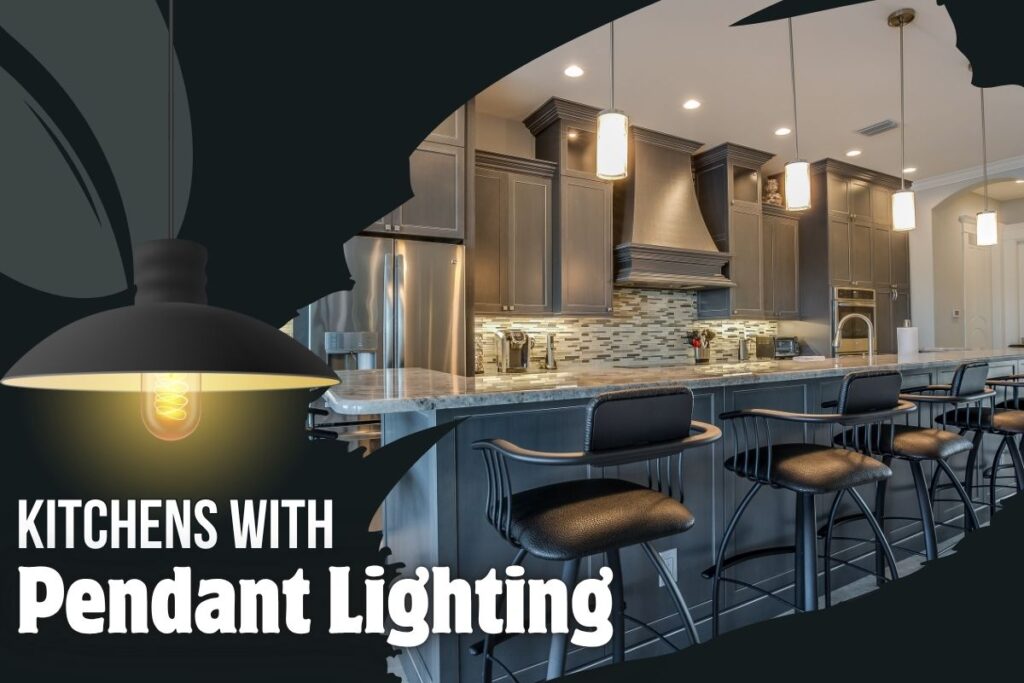Pendant lighting in kitchens has become one of those things you see everywhere these days, and there’s a good reason for it. It’s not just the space that gets brightened up. It brings actual style and personality without being fussy or over-the-top.
And if you’re part of the percentage of homeowners who changed their kitchen or intend to shortly, pendant lights can represent a significant upgrade. This is no old-school design guide, but rather a chat with a friend who recently remodelled their kitchen and knows a thing or two about what does and doesn’t work.
Why Pendant Lighting in Kitchens Works So Well
For starters, pendant lights simply look good. They add personality. No matter if your kitchen is ultra-modern and high-gloss or warm and rustic, there is a pendant light style to suit. But it’s not all about looks.
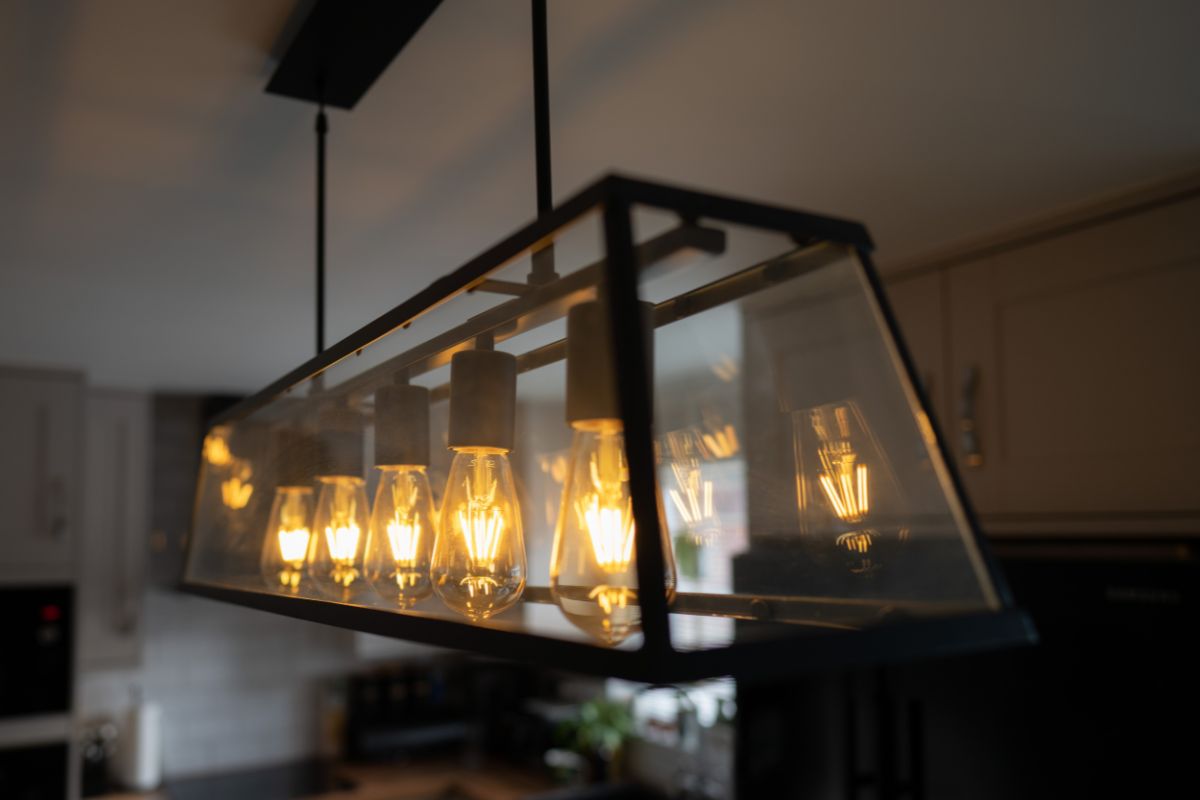
Pendant lighting provides focused light right where you want it. Over an island. Over a dining table. Even on a worktop while chopping vegetables.
Instead of boring ceiling spots that deaden everything with plain brightness, pendants produce small, illuminating pools. Makes the room feel warmer. More inviting and less like a hospital corridor.
Also read: DIY Adjustable Dumbbells for Home Workouts
Types of Pendant Lights for Kitchens
Here’s the thing. “Pendant light” is a common term for a hanging light. But the styles are myriad.
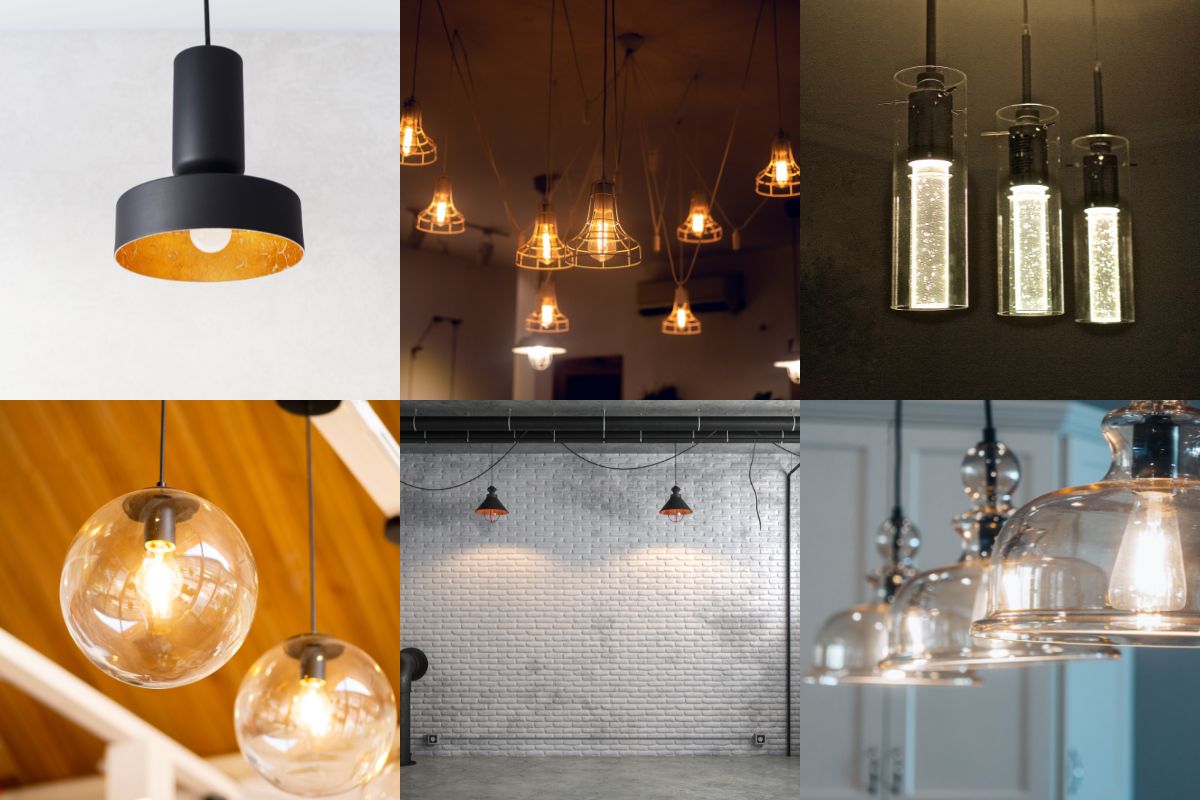
- Single pendants: Just one light. Good for small spaces.
- Cluster pendants: A group of lights, often bunched together. Makes a big statement.
- Linear pendants: Long fixtures with several lights one after the other. Great over the islands.
- Globe pendants: Classic round shapes. Soft light goes with everything.
- Industrial-style: This is all about metal shades, bare bulbs. Looks great in urban kitchens.
- Glass pendants: Allow lots of light to pass. Look elegant without blocking sightlines.
Honestly, there’s something for everyone.
Best Spots for Pendant Lighting in the Kitchen
Not every part of the kitchen needs a pendant light. But some spots benefit from it.
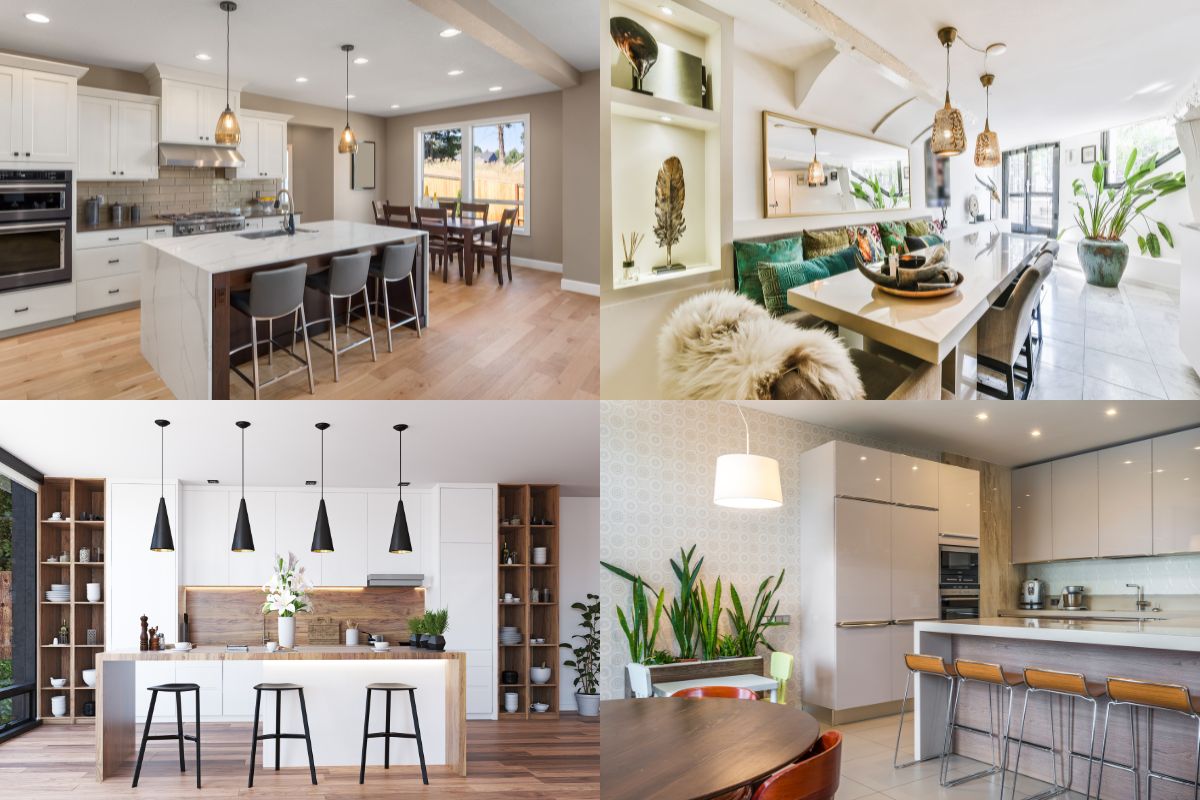
Over the kitchen island:
Probably the most popular. Whether you’re prepping food, eating breakfast, or helping the kids with homework, you want good light here.
Above a dining table:
Helps define the eating area. Makes it feel special even if you’re just having beans on toast.
Over a breakfast bar:
If you’ve got stools lined up, pendant lights give the area a proper café vibe.
In corners or dark spots:
Sometimes, a single pendant in a tricky corner can brighten it up and make it feel used.
Choosing the Right Height
Here’s where people mess up. If it’s too high, the light source doesn’t hit the spot it needs to hit. Too low, and you could be bonking the top of your head every time you rummage for salt.
General rule of thumb?
Approximately 75-90cm (30-36 inches) over an island or table.
Taller ceilings could require more of a drop.
You want it high enough to give a focused light and low enough so that you’re not ducking under it.
How Many Pendant Lights Do You Need?
Depends on the space.
- Small island or table? One or two lights.
- Longer island? Three or even four in a row.
You don’t have to be perfect. Even spacing helps, but don’t overthink it. It’s your kitchen, not an art gallery.
Picking the Right Bulbs
Don’t just grab any old bulb.
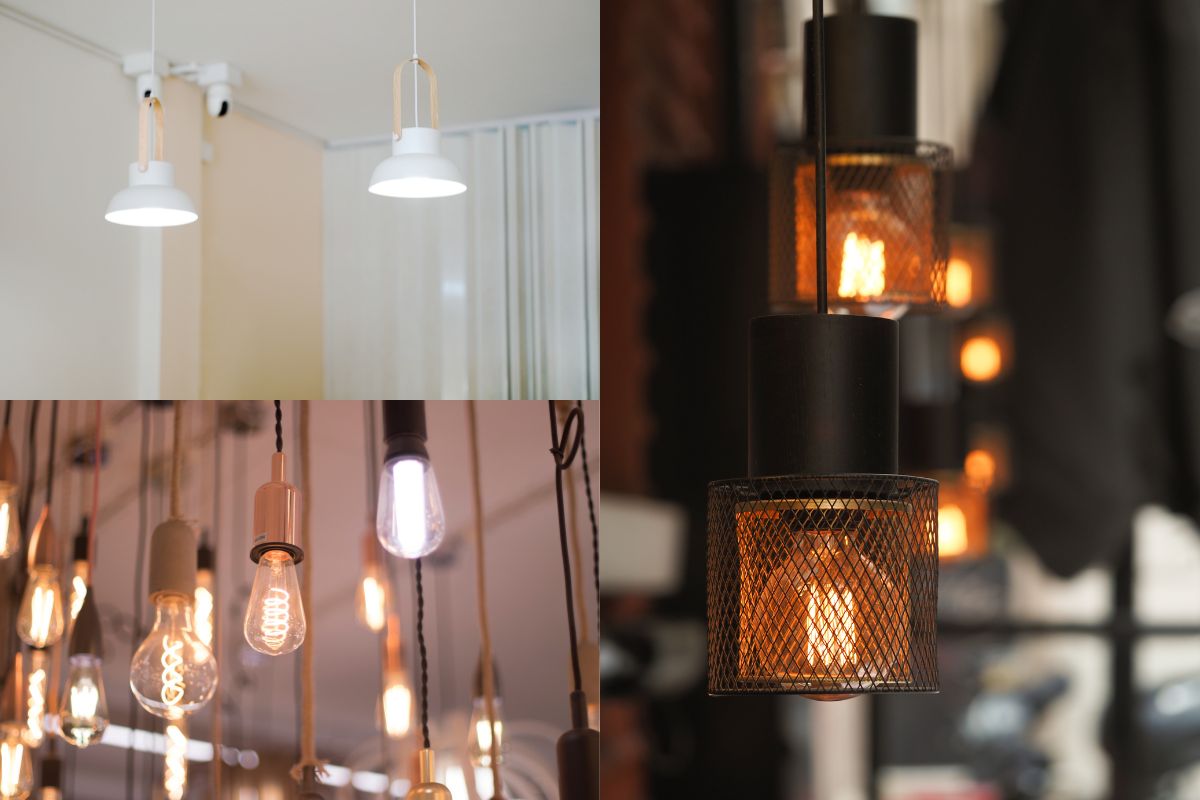
- Warm white light makes the kitchen feel inviting.
- Cool white can work in modern kitchens, but can feel a bit harsh.
- LED bulbs save on bills and last ages.
Also, think about brightness. You don’t want interrogation-room lighting over your dinner.
Matching Your Kitchen Style
Pendant lighting is great because you can choose something that suits your style.
- Modern kitchen? Sleek metal or glass pendants.
- Country-style? Rustic wood and warm shades.
- Industrial vibe? Exposed bulbs and black metal fittings.
- Eclectic? Mix and match colours and shapes.
You don’t have to buy the “matching set” either. Sometimes mixing styles looks better.
Cost and Budget
You can spend a fortune on designer lighting. Or you can head to a regular store or shop online and find decent ones for about $25–$65 each.
Honestly, you don’t need to break the bank. The fitting matters more than the price tag.
Installing Pendant Lighting
If you’re handy, you might change out a pendant yourself. But if you’re adding new wiring or want multiple lights where there weren’t any, get an electrician.
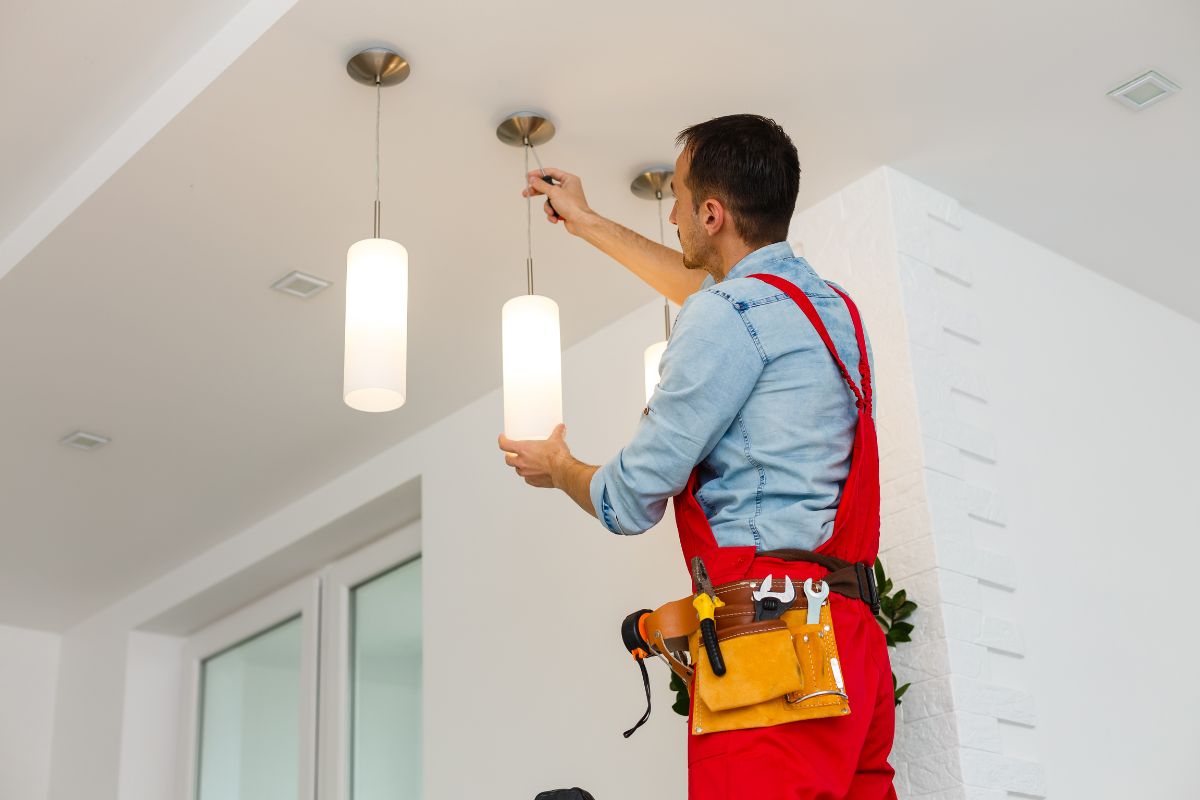
It’s worth it. Badly installed lighting isn’t just ugly. It’s dangerous.
Keeping It Practical
Pendant lights are beautiful, but think about the cleaning. And glass shades display grease and fingerprints. Fabric ones can collect dust.
If your cooker is right up against where you might want a pendant, consider it again, or choose something you can easily wipe.
Also read: Inspiring Pinterest Ideas for Home Office
Final Thoughts
Pendant lighting in the kitchen isn’t a flash in the pan fad that will jump the shark next year. And it works — because it’s practical, versatile, and full of style. Whether you’re after a modern, industrial look or something cosy and traditional, there are pendant lights for you. It’s one of the easiest ways to create that special kitchen vibe without gutting cabinets or replacing appliances.
And at the end of the day? A kitchen’s where people gather. You might as well make it look OK and feel more welcoming. So if you’re considering renovating your kitchen, perhaps it’s time to turn your gaze upward — and to see what a few sleekly hanging pendant lights may do.

